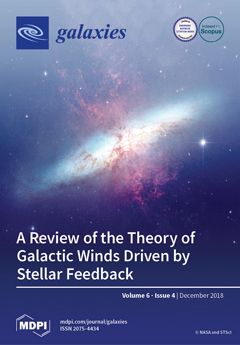1
CSIRO Astronomy and Space Science, Kensington, Perth 6151, WA, Australia
2
Hamburger Sternwarte, Universität Hamburg, Gojenbergsweg 112, 21029 Hamburg, Germany
3
CSIRO Astronomy and Space Science, P.O. Box 76, Epping 1710, NSW, Australia
4
INAF-Istituto di Radioastronomia, Via Gobetti 101, 40129 Bologna, Italy
5
School of Computing, Engineering and Mathematics, Western Sydney University, Locked Bag 1797, Penrith 2751, NSW, Australia
6
Department of Astronomy, The Inter-University Institute for Data Intensive Astronomy (IDIA), University of Cape Town, Rondebosch 7701, South Africa
7
Department of Engineering Science, Oxford e-Research Centre (OeRC), University of Oxford, Oxford OX1 3QG, UK
8
Dunlap Institute for Astronomy and Astrophysics, 50 St. George Street, Toronto, ON M5S 3H4, Canada
9
School of Physics, The University of New South Wales, Kensington 2033, NSW, Australia
10
Dominion Radio Astrophysical Observatory, Herzberg Astronomy, National Research Council Canada, P.O. Box 248, Penticton, BC V2A 6K3, Canada
11
Research School of Astronomy and Astrophysics, Australian National University, Canberra 2611, ACT, Australia
12
Minnesota Institute for Astrophysics, University of Minnesota, Minneapolis, MN 55455, USA
add
Show full affiliation list
remove
Hide full affiliation list
Abstract
We present observations of linear polarisation in the southern radio lobe of Centaurus A, conducted during commissioning of the Australian Square Kilometre Array Pathfinder (ASKAP) telescope. We used 16 antennas to observe a 30 square degree region in a single 12-h pointing over
[...] Read more.
We present observations of linear polarisation in the southern radio lobe of Centaurus A, conducted during commissioning of the Australian Square Kilometre Array Pathfinder (ASKAP) telescope. We used 16 antennas to observe a 30 square degree region in a single 12-h pointing over a 240 MHz band centred on 913 MHz. Our observations achieve an angular resolution of
arcseconds (480 parsecs), a maximum recoverable angular scale of 30 arcminutes, and a full-band sensitivity of 85
Jy beam
. The resulting maps of polarisation and Faraday rotation are amongst the most detailed ever made for radio lobes, with order 10
resolution elements covering the source. We describe several as-yet unreported observational features of the lobe, including its detailed peak Faraday depth structure, and intricate networks of depolarised filaments. These results demonstrate the exciting capabilities of ASKAP for widefield radio polarimetry.
Full article





